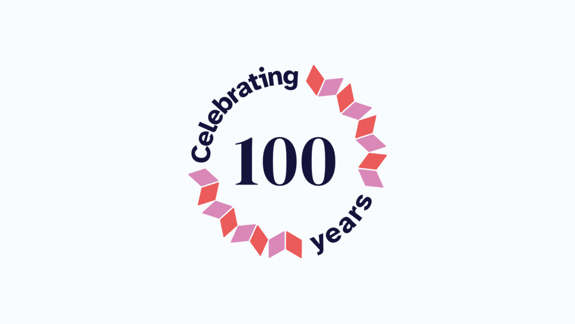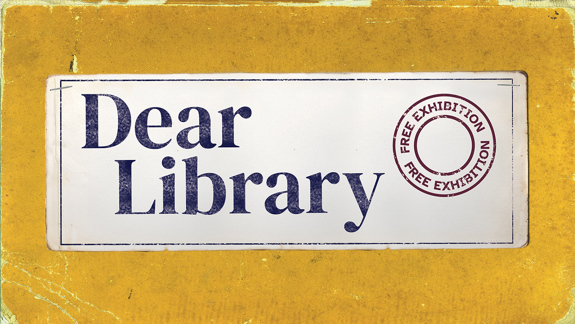From Matilda to Buffy: Libraries in pop culture
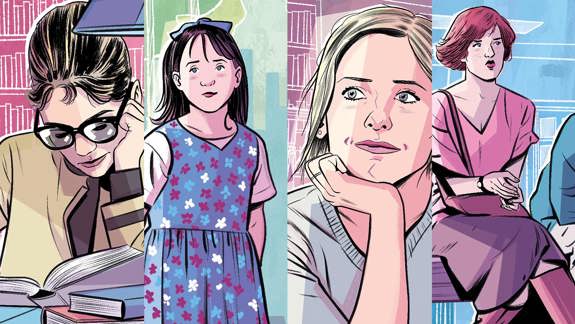
Introduction
The library in pop culture is a space for learning and discovery, for finding out the secrets of the universe and of the self. Libraries' silent reading rooms set the scene for flirtation, romantic tension and illicit love affairs amongst the stacks. They can be prisons for students stuck in detention, like in 'The Breakfast Club', or places of refuge at the end of the world, like for the characters in a frozen New York City in 'The Day After Tomorrow'.
At library tables, characters work together to solve mysteries, and in the shadowy corners of fantasy libraries, protagonists discover their own unnatural powers. Unlike the bookshop, where money is exchanged in order to access the space, libraries are buildings open to the public, where characters from every walk of life can linger, read and meet one another. Again and again libraries appear in pop culture as spaces where characters change and grow.
Whether pop culture libraries are real or fictional, magical or ordinary, they hold special places in our collective imagination. Below we explore some of our favourite libraries from films, television shows and novels, and how these fictional libraries reflect why our real libraries are so important.
Coming of age in the library
At the beginning of our lives, libraries are spaces of discovery; both for finding out knowledge about the world and for discovering who we are as people. For young readers, libraries offer freedom through the stories they hold, with each book representing a doorway into a new way of thinking and feeling.
This is what a young, precocious Matilda Wormwood discovers after she walks ten blocks on her own to visit her local library in the film 'Matilda' (1996). Unlike her chaotic family home, the public library is a calm, quiet space, where she is left in peace to find what she loves: books. When Matilda quickly outgrows the children's section and starts exploring the other shelves, the librarian Mrs Phelps reveals something extraordinary to Matilda: you can, in fact, get a library card and take books home. Matilda carries her library books back and forth from the library to her home as she grows up, raised by her favourite authors as much as she is by her neglectful parents. "These books gave Matilda a hopeful and comforting message," narrates Danny DeVito in the film's voiceover. "You are not alone."
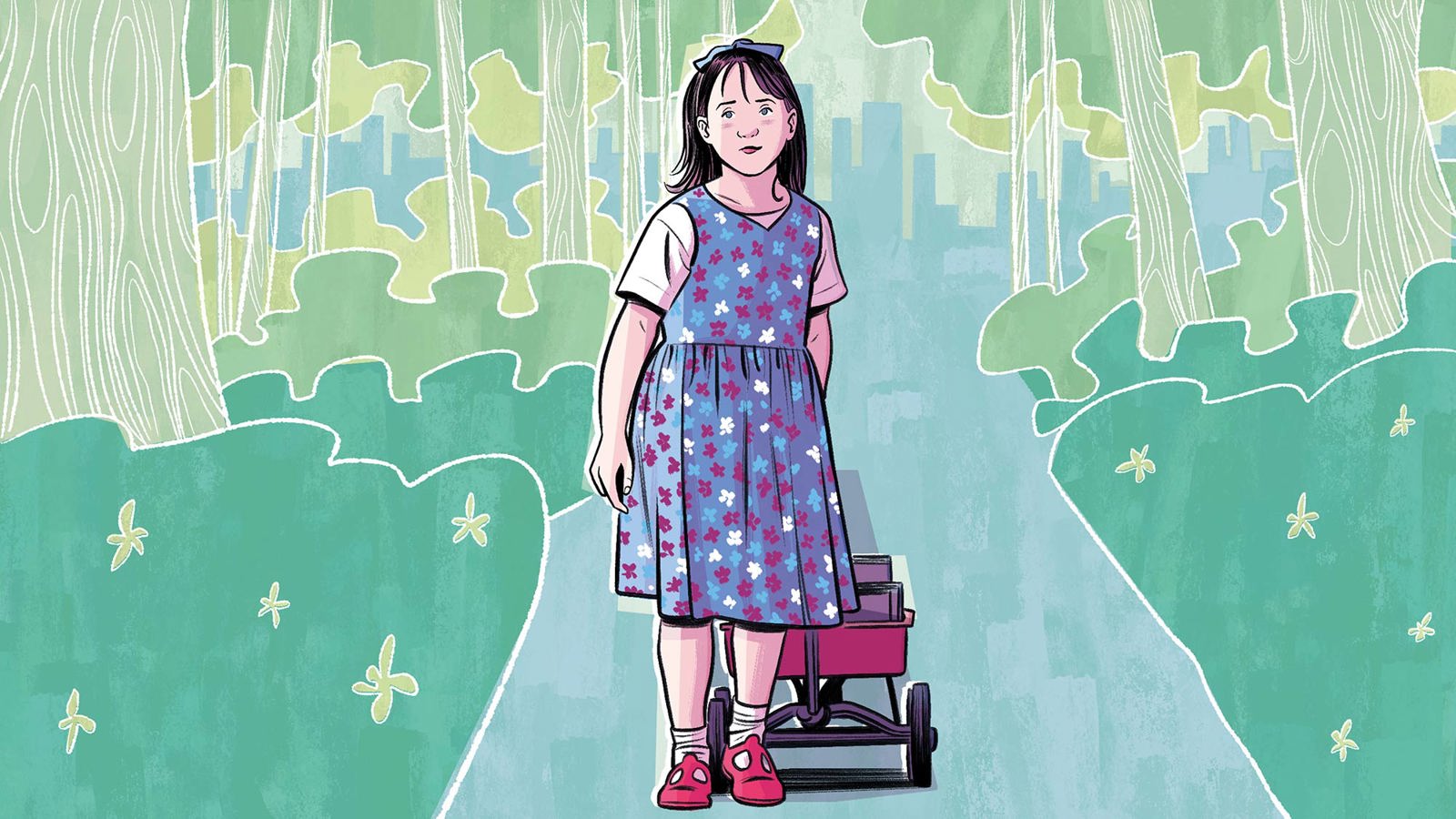
Matilda's library books also serve as the catalyst for her telekinesis powers; when she truly comes into her own self. After her father (also played by DeVito) destroys Matilda's library book and forces her to watch a show with the rest of the family, her distress causes the television set to explode. The consequences of destroying library books are severe, the film implies. The library, once Matilda's refuge, is taken away from her at great emotional cost, and when she loses access to the library, she also loses a part of her identity. She spends the rest of the film trying to recover her sense of self, curated through stories.
For young people who visit their school libraries every day, the library becomes a place where teenagers come of age. Hidden behind stacks of books and left to themselves, students use their libraries to discover crucial plot points in film and television shows, beyond their studies. In 'Dead Poets Society' (1989), curious about their new English teacher Mr Keating (Robin Williams), a group of boys find an old annual in their boarding school's library. Inside they discover their eccentric teacher was a member of the Dead Poet's Society, a secret group devoted to the humanities, and they are inspired to revitalise the Society.
But the school library is also where students can discover themselves, beyond the books they read. In 'The Breakfast Club' (1985), five teenagers, each from a different social group, are brought together for detention in their school library. Over the course of a day, the five students argue, smoke and slowly learn about each other's lives. Trapped in the library, they connect with one another. Unlike the cafeteria, sports fields and school corridors where social dynamics keep these characters apart, the library is a safe place, away from prying eyes, where the characters can reveal their deep secrets and discover that they have more in common than first appearances would suggest.
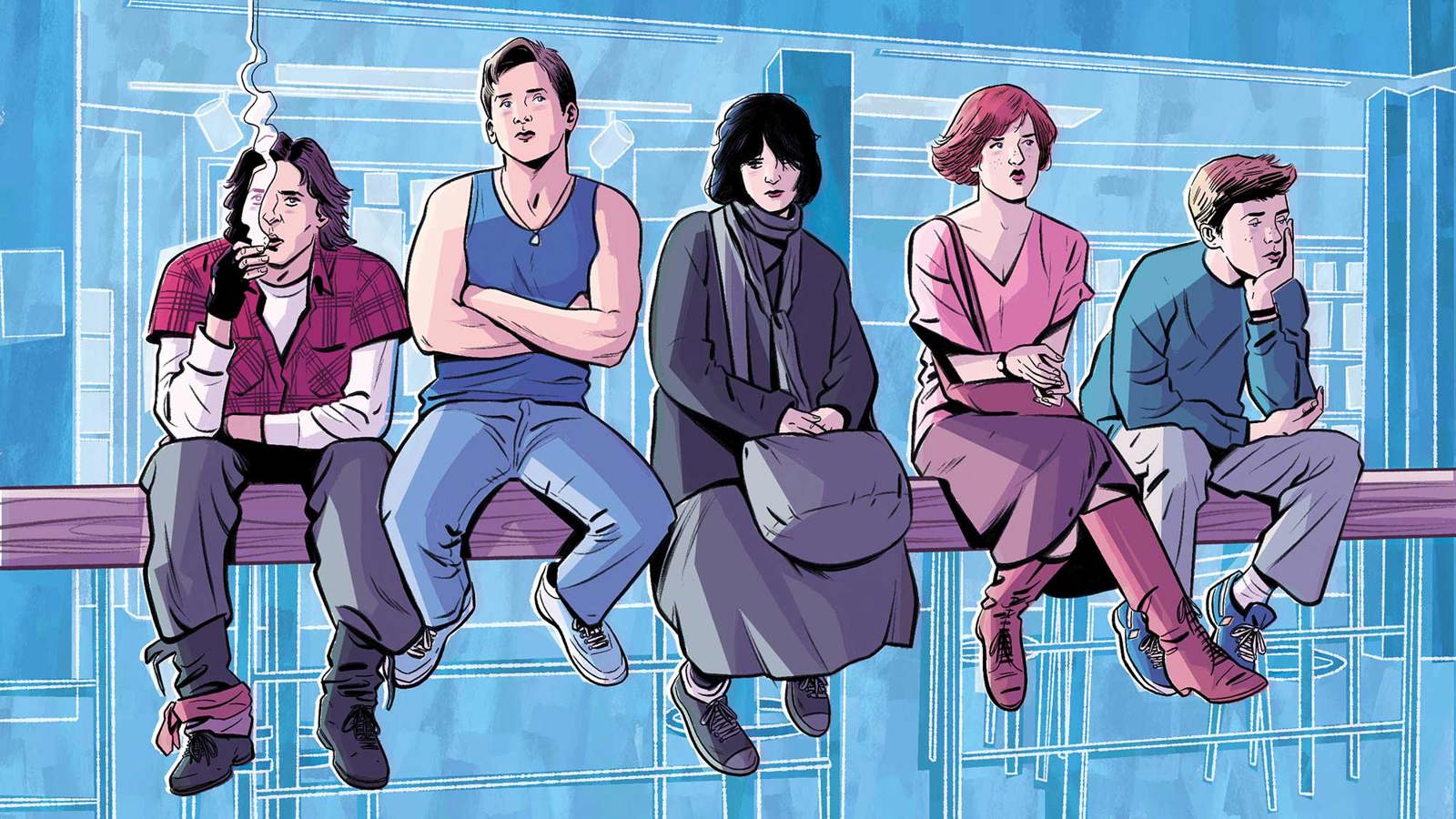
Tears are shed, fights are had, and one iconic dance scene later, the five students leave the library, their lives forever changed. For young people who lack spaces where they can wholly and safely be themselves, the library offers liberation as a place that nurtures self-discovery away from the pressures of the classroom or home.
Romance amongst the stacks
The library is the perfect setting where romance can kindle, or even where you could meet your soulmate by walking through its doors. In the book, movie and television series 'The Time Traveler's Wife', time traveller and librarian Henry and his future wife Claire run into each other in the Newberry Library in Chicago where Henry works. For Henry, this is his first time meeting Claire, but for Claire, this is a reunion after spending her childhood with an older Henry. This chance encounter in the library is where Claire and Henry's relationship as adults begins, in their time-defying romance.
While the library can be the setting for a movie meet-cute, it can also be the perfect spot for a date. In Disney's 'Beauty and the Beast' (1991), the Beast ruminates on what he can present to Belle as evidence of his romantic feelings. Flowers and chocolates are suggested, until Lumiere, the anthropomorphic candlestick, proposes the castle's magnificent library. Belle, the booklover, falls in love with the Beast's library before she does with the man-beast himself, but it's by reading the library books together that the two finally bond.
Each stage of a romantic relationship can play out in a library's reading room: it can be where we meet each other, where we go to flirt, and where our relationships are tested. The different stages of socialite Holly Golightly and writer Paul Varjak's relationship come to be in the New York Public Library in 'Breakfast at Tiffany's' (1961). Early in the movie, Paul takes Holly to the library, a building she's never been to before. Paul explains to her the Reading Room and the cataloguing system, and they request his book from the librarians. Holly breaks two of the library's sacred rules: speaking loudly and defacing books as she encourages Paul to autograph his book. As they walk out of the library after being told off, Holly announces, "I don't think this place is half as nice as Tiffany's".
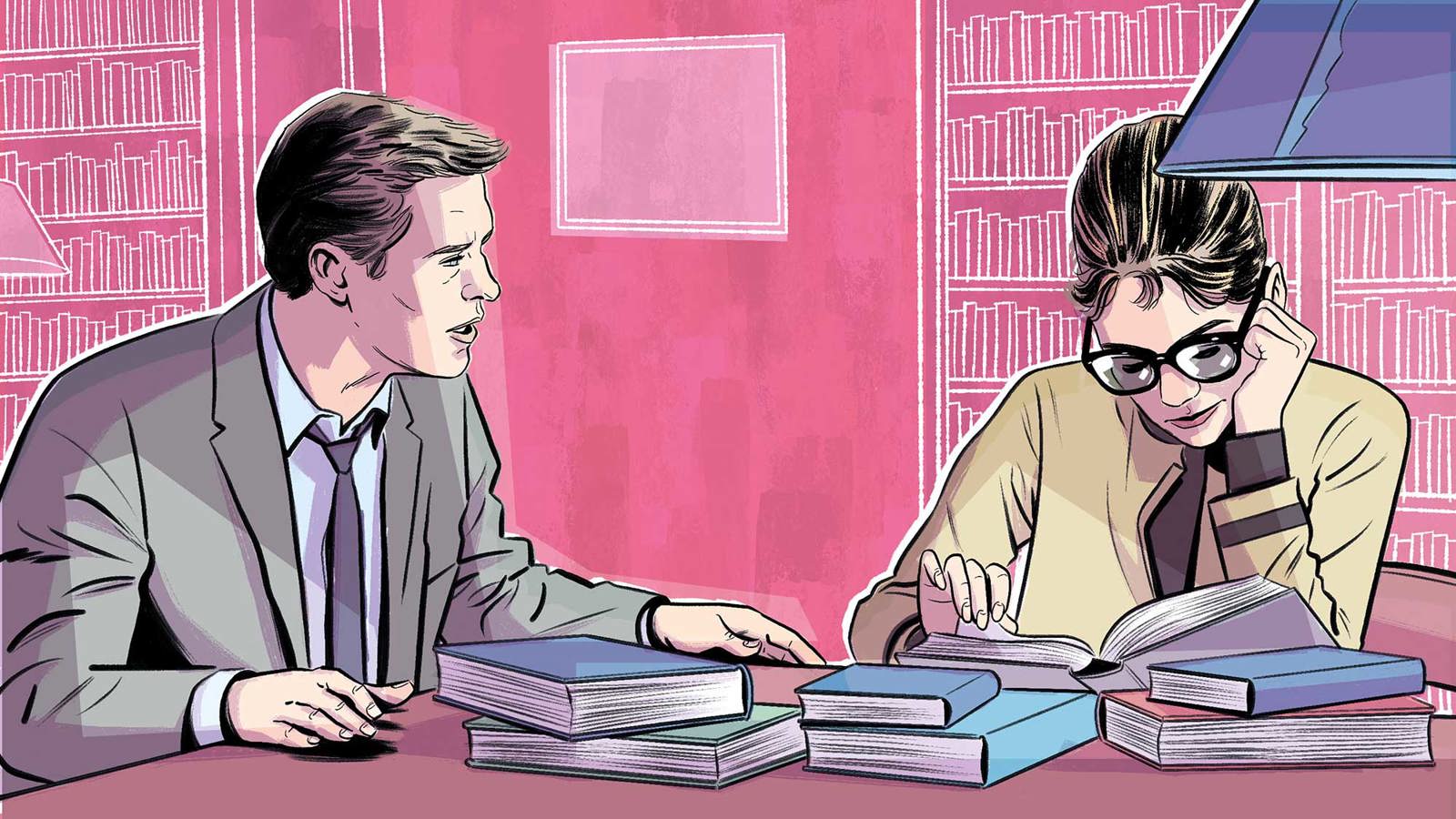
While their first trip to the library is played for laughs, Holly and Paul's second trip to the New York Public Library is less fun. Paul walks into the Reading Room, where he is surprised to find Holly reading books on South America, wearing glasses and uninterested in speaking to him. Frustrated by her silence at his declaration of love, Paul causes a scene in the Reading Room, shaking Holly, before they separate with bitter resentment for one another. The library, once unknown to Holly, is now a source of knowledge about the wider world outside New York City, and the quiet Reading Room sees Holly's relationship with Paul burn with passion and then resentment.
One of the most iconic library scenes in recent cinema also sets an intense romantic relationship amongst the stacks. In a pivotal scene in 'Atonement' (2007), young Briony Tallis finds her sister, Cecilia, up against the shelves and in the arms of Robbie, the housekeeper's son. While Briony believes her sister is being assaulted, later the film's perspective shifts, and we see Cecila and Robbie declare their love for each other in the library. This moment in the library, and Briony's confusion of what she sees in the shadows, will ripple across all three of the characters' lives. The quiet, dimly lit library can also be a place where romantic tension is played out, and it can also be a place where a person's life is changed forever.
Knowledge as power in libraries
While libraries are often viewed as cosy and quaint buildings with dusty books and strict rules, they can also be powerful institutions where knowledge is carefully guarded. Fantasy libraries in books, movies and television shows often embody the common saying – that knowledge is power – as they emphasise how libraries can unleash powerful, even dangerous, supernatural forces.
In her novel 'Babel', set in a fantastical reimagining of Victorian-era Oxford, R. F. Kuang takes inspiration from the Tower of Babel. In Kuang's novel, Babel is Oxford's translation institute, part library and part workshop, where university students use their powers of magical translation to inadvertently expand the British Empire. 'Babel' is a warning: that the knowledge contained within libraries can be weaponised if it is used without careful consideration.
A fantastical Oxford is also the setting for Philip Pullman's 'His Dark Materials' and its sequel/prequel series 'The Book of Dust'. It is in Pullman's version of Oxford University's Bodleian Library where Lyra discovers the secrets of her alethiometer, or golden compass, with the help of the library's books. In the wrong hands, the device is a weapon, and in the right ones, it is an important tool. It's in the library, armed with knowledge, where Lyra discovers just how powerful the small compass can be.
The Bodleian Library is, again, the setting for magical discovery in 'A Discovery of Witches' (2011). In Deborah Harkness's novel, Diana, a young professor and reluctant witch, finds a long-lost manuscript in the library, and unleashes its magic contents which propels her into a world of witches and vampires.
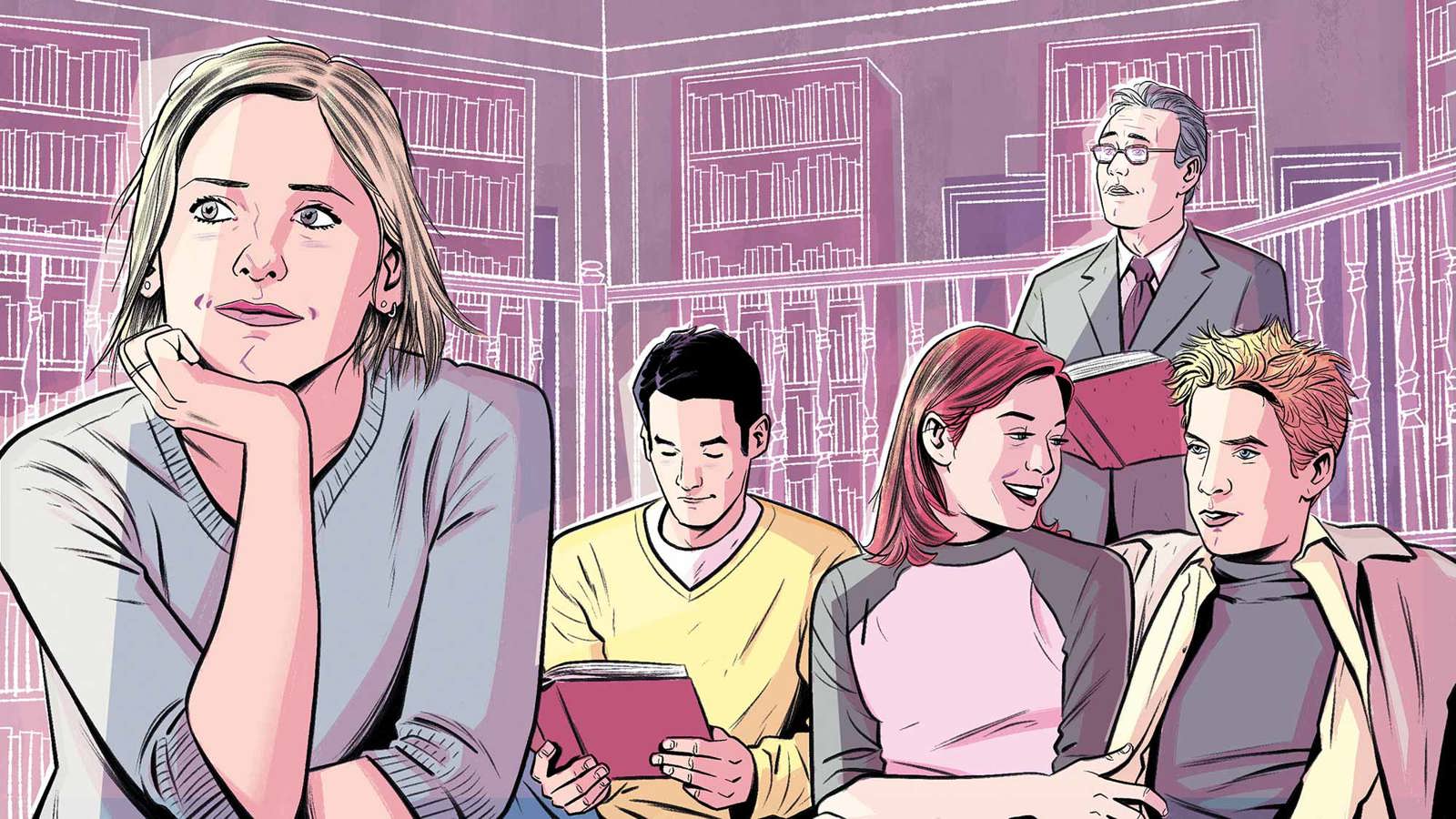
Likewise, in 'Buffy the Vampire Slayer', the Sunnydale High School Library becomes a basecamp for Buffy and her gang, the 'Scoobies', to consult books on witchcraft, vampires and demons when the supernatural threatens their school and town. With guidance from the school librarian Giles, the Scoobies use the library both as a source of knowledge and as a space where they can regroup and discuss Sunnydale's demonic goings-ons away from the prying eyes of parents.
Libraries, in these fantastical stories, are holders of ancient knowledge. While our real-world libraries are unlikely to unleash witches and vampires into the world, these stories use their fantasy libraries to explore how knowledge is a powerful resource; one that shouldn't be underestimated. Libraries are the keepers of national, cultural and institutional records which will, one day, become history. They are political spaces, and their unleashed knowledge has the power to change the world, something that fantasy storytellers understand with their supernatural libraries.
The enduring power of the library
Shelves upon shelves of books represent endless possibilities, and libraries play important roles in our favourite stories as buildings for discovery, learning and knowledge. In treasure-hunting movies, like 'The Mummy' and 'Indiana Jones and the Last Crusade', libraries are important as places where key discoveries are made by characters that propel the plot forward.
But libraries are also places where emotional discoveries are made. In our journey through iconic pop culture libraries, characters have found a sense of peace, a sense of self and a sense of belonging amongst the stacks.
Libraries are important for many reasons. Yes, they are buildings of knowledge and learning, but libraries are also vital in our lives as places where a child's world is expanded for the first time, like in Matilda; as safe spaces where teenagers can push back against social expectations, like in 'The Breakfast Club'; and as the settings for the most intimate moments of our lives, like in 'Atonement'.
These pop culture libraries highlight the variety of roles libraries play at different stages of our lives, and why we turn, and return, to them again and again in movies and stories, and also in our real lives.
About the author and illustrator
Katie Goh is a writer and editor from the north of Ireland and lives in Edinburgh. They are an editor for Extra Teeth literary magazine. Katie's book of essays 'The End: Surviving the World Through Imagined Disasters' was a Reviewer's Choice for The Big Issue's Independent Books of 2021. Their memoir 'Foreign Fruit' was published in 2025.
Tom Humberstone is an illustrator and comic artist based in Scotland. His work blends pop culture, storytelling, and an expressive visual style. Alongside illustration, Tom writes about horror and publishes comics and anthologies.
Dive deeper
Celebrating 100 years
